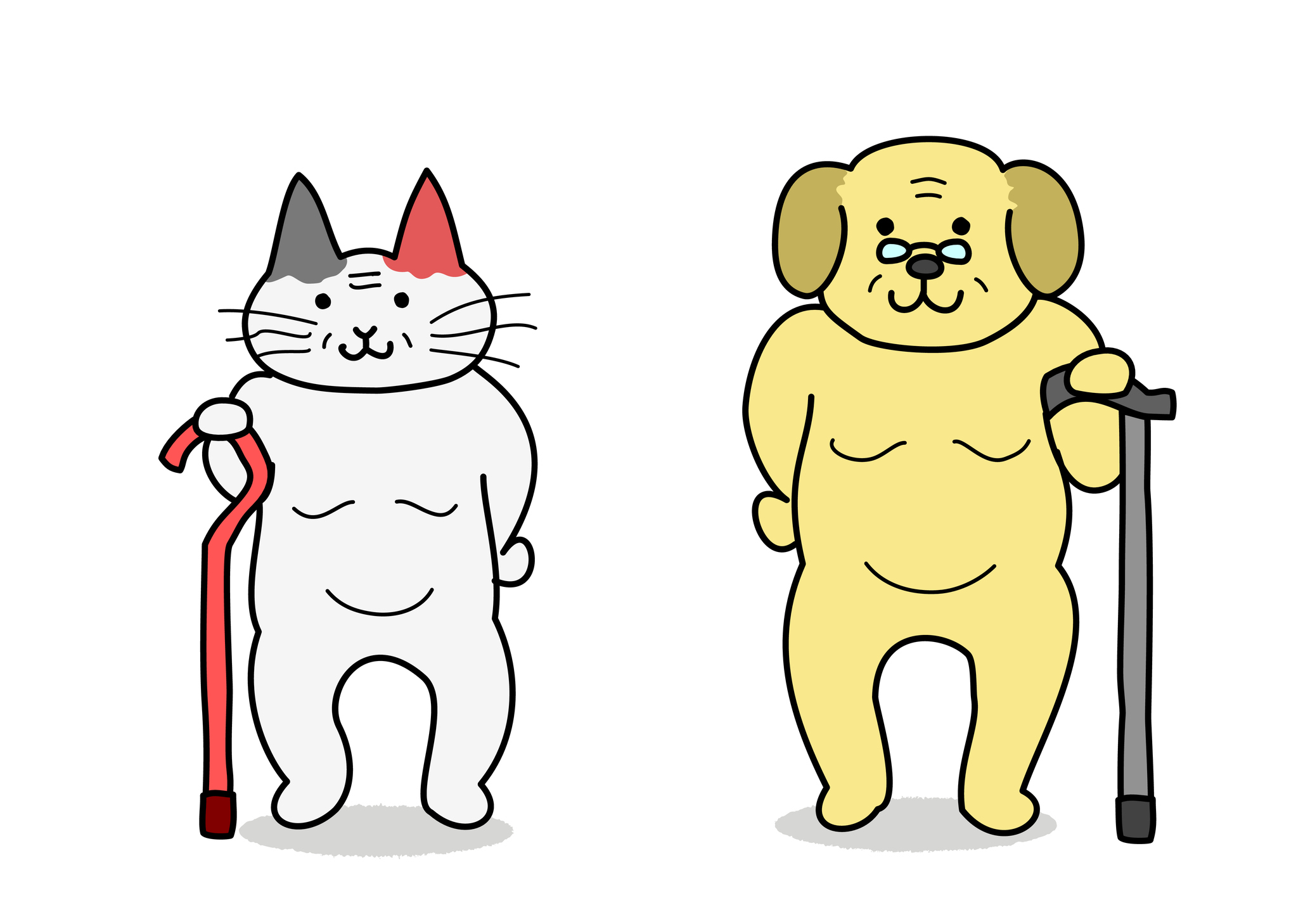
Age and The Brain
Author – Dr Rowena Buxton
The difference between Cognitive Dysfunction Syndrome and aging.
We all know that our pets’ age with us, just at a faster rate. But knowing and noticing are different. Often the things that help our pets to age gracefully make it hard for us to notice them aging. Fur has many advantages in the aging game. Wrinkles are harder to spot, hair lines less likely to recede. Remembering names, anniversaries and where we parked the car, these small tests of cognitive function do not apply to our pets. Without words it is harder for them to tell us, and harder for us to notice, the changes that occur with age.
Cognitive dysfunction syndrome (CDS) occurs in older dogs and cats, most commonly starting around 11 years of age. It is marked by diminishing powers of reasoning and the arrival of changes within the brain tissues. Jessie at ten years of age is a different dog to Jessie at one year of age – slower to learn new tricks and less able to apply old skills to new challenges. The decline is very slow, and for many of us it is hard to recognize the dysfunction as it is happening. If the indicators of aging we notice in people do not apply to pets, how do we tell if there is a problem? Is Jessie aging normally or is there evidence of Cognitive Dysfunction Syndrome?
Some of the brain changes that occur with age can be seen through a microscope, with most pets experiencing some or all of the following. Studying the brain tissue of animals with CDS shows deterioration of cells across the range of tissues found in the brain. The aging brain reduces in weight and size, especially in the centres for thought and movement. As brain tissue reduces there is in an increase in fluid, filling up the atrophied areas. Some of these changes can be seen with Computer Tomography (CT) or MRI. Amyloid protein accumulates from levels undetectable in young dogs to most extensive in older pets, and leads to compromised brain function. The greater the accumulation of protein, the harder it is to learn new skills.
Many small bleeds (microhaemorrhages) occur, and blood flow worsens. The brain suffers from low oxygen and glucose. Aging also alters neurotransmitters and changes cell processes. In pets with CDS, the increase is even greater than what is normal for an aged animal. The altered metabolic process results in cell membrane damage, and cell death.
Nerve growth factor is less in older dogs with CDS than young or aged dogs without CDS. There is a similar finding in Alzheimer’s affected people. Age-related dementia in humans is associated with anxiety, mood disorders, and agitation that may increase as dementia worsens. These changes may be similar to the agitation, distress, and anxiety (e.g., separation anxiety, aggression, irritability, vocalization, fears, compulsive disorders, night waking) that are seen in some senior animals.
Once we know what is happening in the brain, and how that relates to behaviour, it is easier to spot the behaviour changes that indicate CDS in our pets. Some or all of these changes can occur in a pet with CDS. Using your camera to capture the behaviours at home can really help with the diagnosis.
1) Wandering, staring, or moving to unusual places – these behaviours indicate spatial disorientation or confusion
2) House soiling and lack of response to previously learned commands are indications of altered learning and memory loss
3) Alterations in activity levels such as purposeless or repetitive activity, or a decline in activity.
4) Decreased or altered interactions, or changes in responsiveness to family members may occur.
5) Night time waking or increased anxiety at night, irritability or restlessness.
6) Decreased interest in eating, walking, playing as a result of changes in perception of or responsiveness to stimuli
It can be difficult to decide whether Jessie is a normal aging pet, or suffering the symptoms of CDS (cognitive dysfunction syndrome).
Your vet can help you to identify behaviours at home associated with both aging and CDS. These behaviours, in combination with the results of a thorough physical exam, neurological findings and laboratory tests can help make a diagnosis.
Causes that need to be ruled out include physical causes of pain and anxiety, hypertension, metabolic and endocrine disorders, drug reactions, systemic infections, and intracranial diseases (diseases within the brain such as neoplasia) that can mimic signs of CDS.
Aged pets can have CDS along with other medical problems, so an improvement in response to environmental enrichment, medications for CDS and/or dietary changes (e.g. Hill’s b/d), helps to make the diagnosis of CDS.
While there is no known cure for Cognitive Dysfunction Syndrome there are treatments that can help. A complete and balanced diet, medications aimed at improving circulation and reducing inflammation, complementary therapies that reduce anxiety and stabilise sleep patterns – all of these can help. Simple changes can be made at home, such as daily exercise, introducing new toys regularly and housing with another dog when possible. Owners observations suggest that dogs challenged by CDS and aging that are given these opportunities seem to have a good chance of living a full lifespan, if supported by the veterinarian and the owner.


